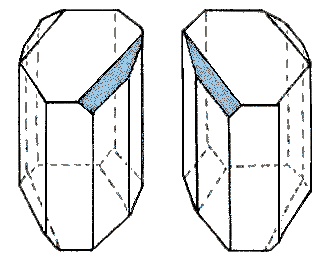

علم الكيمياء

تاريخ الكيمياء والعلماء المشاهير

التحاضير والتجارب الكيميائية

المخاطر والوقاية في الكيمياء

اخرى

مقالات متنوعة في علم الكيمياء

كيمياء عامة


الكيمياء التحليلية

مواضيع عامة في الكيمياء التحليلية

التحليل النوعي والكمي

التحليل الآلي (الطيفي)

طرق الفصل والتنقية


الكيمياء الحياتية

مواضيع عامة في الكيمياء الحياتية

الكاربوهيدرات

الاحماض الامينية والبروتينات

الانزيمات

الدهون

الاحماض النووية

الفيتامينات والمرافقات الانزيمية

الهرمونات


الكيمياء العضوية

مواضيع عامة في الكيمياء العضوية

الهايدروكاربونات

المركبات الوسطية وميكانيكيات التفاعلات العضوية

التشخيص العضوي

تجارب وتفاعلات في الكيمياء العضوية


الكيمياء الفيزيائية

مواضيع عامة في الكيمياء الفيزيائية

الكيمياء الحرارية

حركية التفاعلات الكيميائية

الكيمياء الكهربائية


الكيمياء اللاعضوية

مواضيع عامة في الكيمياء اللاعضوية

الجدول الدوري وخواص العناصر

نظريات التآصر الكيميائي

كيمياء العناصر الانتقالية ومركباتها المعقدة


مواضيع اخرى في الكيمياء

كيمياء النانو

الكيمياء السريرية

الكيمياء الطبية والدوائية

كيمياء الاغذية والنواتج الطبيعية

الكيمياء الجنائية


الكيمياء الصناعية

البترو كيمياويات

الكيمياء الخضراء

كيمياء البيئة

كيمياء البوليمرات

مواضيع عامة في الكيمياء الصناعية

الكيمياء الاشعاعية والنووية
Pasteurs Discovery of Enantiomers
المؤلف:
..................
المصدر:
LibreTexts Project
الجزء والصفحة:
.................
9-7-2019
1292
Pasteur's Discovery of Enantiomers
After completing this section, you should be able to discuss how the results of work carried out by Biot and Pasteur contributed to the development of the concept of the tetrahedral carbon atom.
After completing this section, you should be able to discuss how the results of work carried out by Biot and Pasteur contributed to the development of the concept of the tetrahedral carbon atom.
Because enantiomers have identical physical and chemical properties in achiral environments, separation of the stereoisomeric components of a racemic mixture or racemate is normally not possible by the conventional techniques of distillation and crystallization. In some cases, however, the crystal habits of solid enantiomers and racemates permit the chemist (acting as a chiral resolving agent) to discriminate enantiomeric components of a mixture. As background for the following example, it is recommended that the section on crystal properties be reviewed.
Tartaric acid, its potassium salt known in antiquity as "tartar", has served as the locus of several landmark events in the history of stereochemistry.

In 1832 the French chemist Jean Baptiste Biot observed that tartaric acid obtained from tartar was optically active, rotating the plane of polarized light clockwise (dextrorotatory). An optically inactive, higher melting, form of tartaric acid, called racemic acid was also known. A little more than a decade later, young Louis Pasteur conducted a careful study of the crystalline forms assumed by various salts of these acids. He noticed that under certain conditions, the sodium ammonium mixed salt of the racemic acid formed a mixture of enantiomorphic hemihedral crystals; a drawing of such a pair is shown on the right. Pasteur reasoned that the dissymmetry of the crystals might reflect the optical activity and dissymmetry of its component molecules. After picking the different crystals apart with a tweezer, he found that one group yielded the known dextrorotatory tartaric acid measured by Biot; the second led to a previously unknown levorotatory tartaric acid, having the same melting point as the dextrorotatory acid. Today we recognize that Pasteur had achieved the first resolution of a racemic mixture, and laid the foundation of what we now call stereochemistry.
Optical activity was first observed by the French physicist Jean-Baptiste Biot. He concluded that the change in direction of plane-polarized light when it passed through certain substances was actually a rotation of light, and that it had a molecular basis. His work was supported by the experimentation of Louis Pasteur. Pasteur observed the existence of two crystals that were mirror images in tartaric acid, an acid found in wine. Through meticulous experimentation, he found that one set of molecules rotated polarized light clockwise while the other rotated light counterclockwise to the same extent. He also observed that a mixture of both, a racemic mixture (or racemic modification), did not rotate light because the optical activity of one molecule canceled the effects of the other molecule. Pasteur was the first to show the existence of chiral molecules.
 الاكثر قراءة في تجارب وتفاعلات في الكيمياء العضوية
الاكثر قراءة في تجارب وتفاعلات في الكيمياء العضوية
 اخر الاخبار
اخر الاخبار
اخبار العتبة العباسية المقدسة

الآخبار الصحية















 قسم الشؤون الفكرية يصدر كتاباً يوثق تاريخ السدانة في العتبة العباسية المقدسة
قسم الشؤون الفكرية يصدر كتاباً يوثق تاريخ السدانة في العتبة العباسية المقدسة "المهمة".. إصدار قصصي يوثّق القصص الفائزة في مسابقة فتوى الدفاع المقدسة للقصة القصيرة
"المهمة".. إصدار قصصي يوثّق القصص الفائزة في مسابقة فتوى الدفاع المقدسة للقصة القصيرة (نوافذ).. إصدار أدبي يوثق القصص الفائزة في مسابقة الإمام العسكري (عليه السلام)
(نوافذ).. إصدار أدبي يوثق القصص الفائزة في مسابقة الإمام العسكري (عليه السلام)


















